Avoid having your email account stolen via "Voicemail" scam emails
Phishing/ScamAlso Known As: Voicemail spam
Get free scan and check if your device is infected.
Remove it nowTo use full-featured product, you have to purchase a license for Combo Cleaner. Seven days free trial available. Combo Cleaner is owned and operated by RCS LT, the parent company of PCRisk.com.
What is "Voicemail email scam"?
"Voicemail email scam" refers to a spam campaign - a mass-scale operation during which thousands of deceptive emails are sent. The letters distributed through this campaign - are disguised as notifications concerning a new voicemail.
This spam mail aims to promote a phishing website designed to record information entered into it. The page requests users to sign in using their email account log-in credentials (i.e., email addresses and corresponding passwords). Hence, by trying to log in through this webpage - users can have their email accounts stolen.
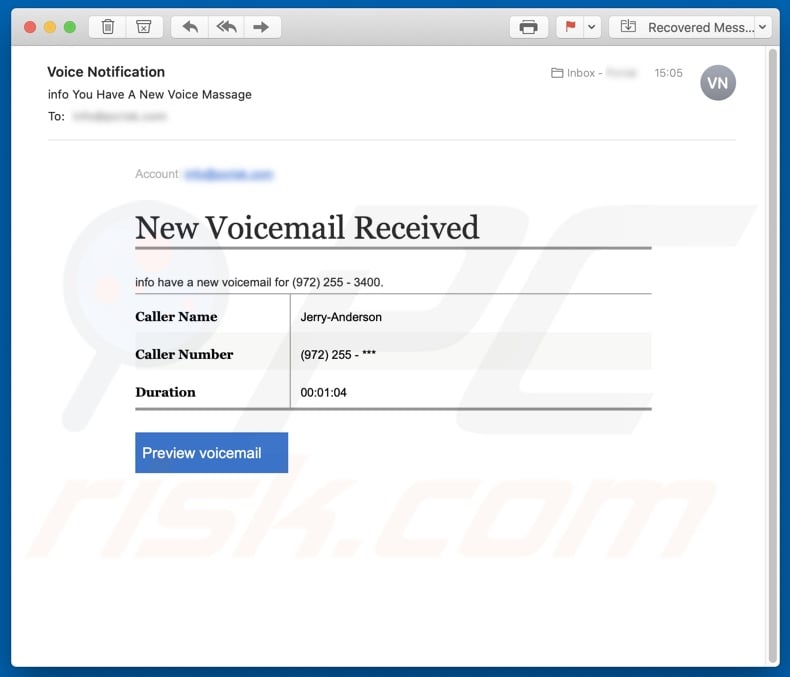
"Voicemail" scam email in detail
The "Voicemail" email notifies recipients of a new voicemail. It also provides details about the fake voice message. When the "Preview voicemail" button is clicked, it redirects to a phishing site. The webpage targets email account log-in credentials. With this data in their possession, scammers may be able to access/control the exposed emails.
Emails are especially targeted by scammers, as they are typically connected to (e.g., used to register other) accounts, platforms, and services. Through hijacked email accounts, access and control might be gained over the content associated with them.
To elaborate, communication accounts (e.g., emails, social networking, social media, messengers, etc.) can be used to pretend to be the genuine owner and ask their contacts/friends for loans. These platforms can also be employed to spread malware by sharing malicious files/links.
Finance-related accounts (e.g., online banking, money transferring, e-commerce, digital wallets, etc.) can be used for fraudulent transactions and/or unauthorized online purchases. Therefore, by trusting the "Voicemail" scam letters, users can experience severe privacy issues, financial losses, and even identity theft.
Should attempts to sign in via the phishing website have already been made - log-in credentials of the potentially exposed accounts must be changed immediately. Additionally, it is recommended to contact the official support of the compromised accounts and platforms.
| Name | Voicemail Email Scam |
| Threat Type | Phishing, Scam, Social Engineering, Fraud |
| Fake Claim | Scam emails claim a new voicemail has been received |
| Symptoms | Unauthorized online purchases, changed online account passwords, identity theft, illegal access of the computer. |
| Distribution methods | Deceptive emails, rogue online pop-up ads, search engine poisoning techniques, misspelled domains. |
| Damage | Loss of sensitive private information, monetary loss, identity theft. |
| Malware Removal (Windows) |
To eliminate possible malware infections, scan your computer with legitimate antivirus software. Our security researchers recommend using Combo Cleaner. Download Combo CleanerTo use full-featured product, you have to purchase a license for Combo Cleaner. 7 days free trial available. Combo Cleaner is owned and operated by RCS LT, the parent company of PCRisk.com. |
Spam campaigns in general
"Wage Increase email scam", "UN Covid-19 stimulus package", "Lidl email scam", and "DBS Bank email scam" are some examples of phishing spam campaigns. The emails distributed through these large-scale operations are usually presented as "official", "urgent", "priority", and similar.
Aside from phishing and other scams, spam letters are also used to proliferate malware (e.g., ransomware, trojans, cryptocurrency miners, etc.). Due to how widespread spam mail is, it is strongly recommended to exercise caution with incoming emails.
How do spam campaigns infect computers?
Systems are infected via virulent files distributed through spam campaigns. These files can be attached to the emails, and/or the letters can contain download links of such content. Infectious files can be in various formats, e.g., Microsoft Office and PDF documents, archives (RAR, ZIP, etc.), executables (.exe, .run, etc.), JavaScript, and so forth.
When the files are executed, run, or otherwise opened - malware download/installation is initiated. For example, Microsoft Office documents cause infections by executing malicious macro commands. This process begins the moment a document is opened - in Microsoft Office versions released prior to 2010.
Newer versions have "Protected View" mode, which prevents automatic execution of macros. Instead, users can manually enable macro commands (i.e., editing/content), and they are alerted of the potential risks.
How to avoid installation of malware?
To avoid infecting the system via spam mail, it is expressly advised against opening dubious and irrelevant emails - especially any attachments or links found in them. Additionally, it is recommended to use Microsoft Office versions released after 2010.
Malware is also spread via untrustworthy download sources (e.g., unofficial and free file-hosting sites, Peer-to-Peer sharing networks, etc.), illegal activation tools ("cracks"), and fake updates. Hence, only official and verified download channels must be used. Furthermore, all programs must be activated and updated with tools/functions provided by genuine developers.
It is crucial to have a reputable anti-virus/anti-spyware suite installed and updated. This software has to be used to run regular system scans and to remove detected threats. If you've already opened malicious attachments, we recommend running a scan with Combo Cleaner Antivirus for Windows to automatically eliminate infiltrated malware.
Text presented in the "Voicemail" scam email letter:
Account: [recipient's email address]
New Voicemail Received
info have a new voicemail for (972) 255 - 3400.
Caller Name Jerry-Anderson
Caller Number (972) 255 - ***
Duration 00:01:04
Preview voicemail
Screenshot of the phishing website promoted by the "Voicemail" spam campaign:
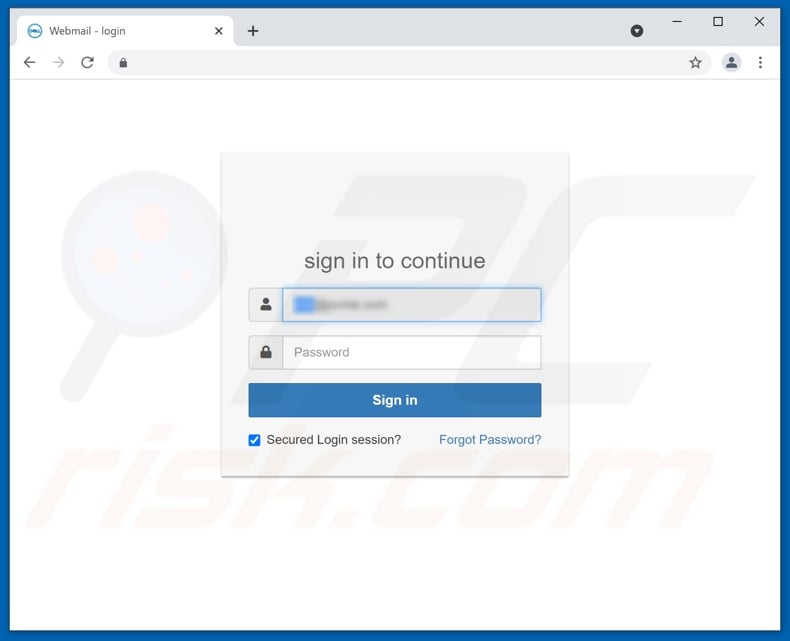
Other examples of voicemail-themed spam emails promoting a phishing sites/HTML documents:
Sample 1:
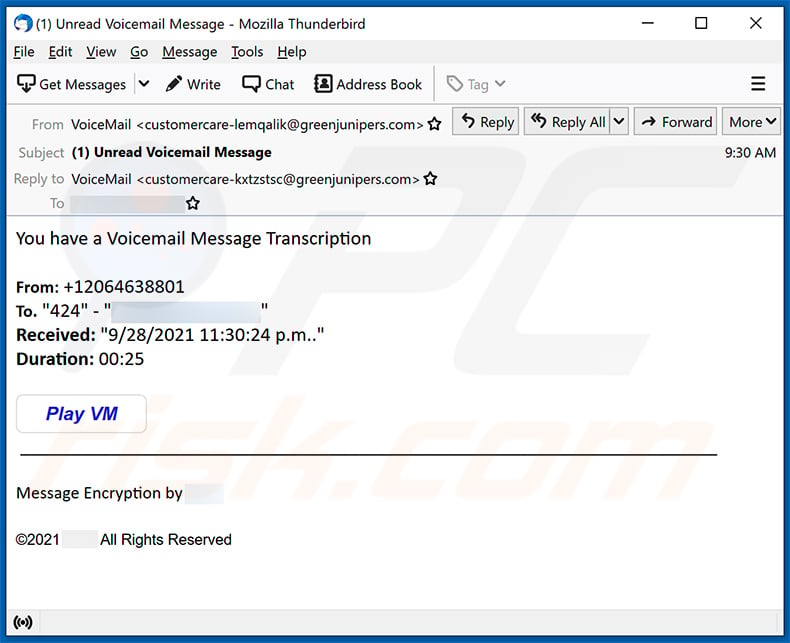
Text presented within:
Subject: (1) Unread Voicemail Message
You have a Voicemail Message Transcription
From: +12064638801
To. "424" - "*********"
Received: "9/28/2021 11:30:24 p.m.."
Duration: 00:25Play VM
____________________Message Encryption by -
©2021 - All Rights Reserved
Screenshot of the promoted phishing site:
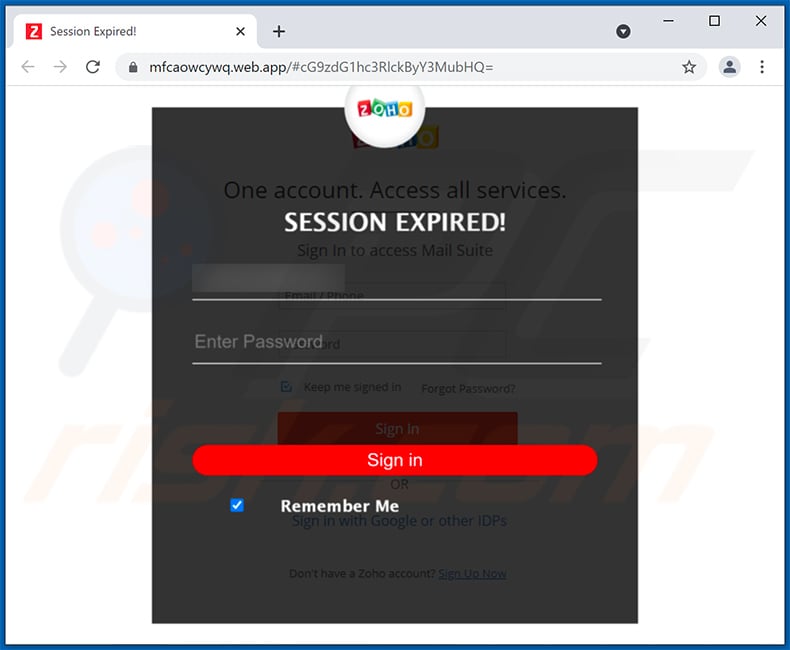
Sample 2:
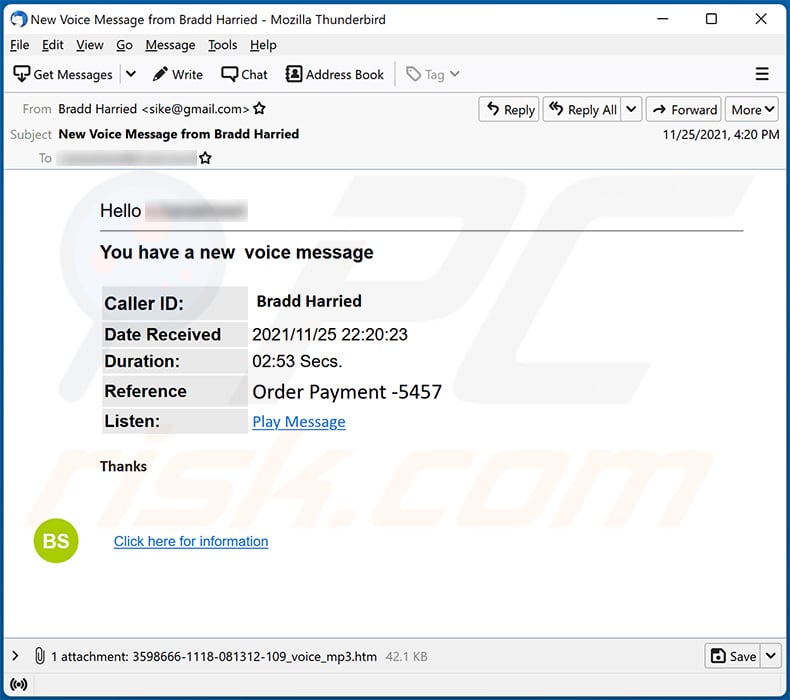
Text presented within:
Subject: New Voice Message from Bradd Harried
Hello -You have a new voice message
Caller ID: Bradd Harried
Date Received 2021/11/25 22:20:23
Duration: 02:53 Secs.
Reference Order Payment -5457
Listen: Play Message
Thanks
BS Click here for information
Screenshot of a Google form (which the attached HTML file redirects to) used for phishing purposes:
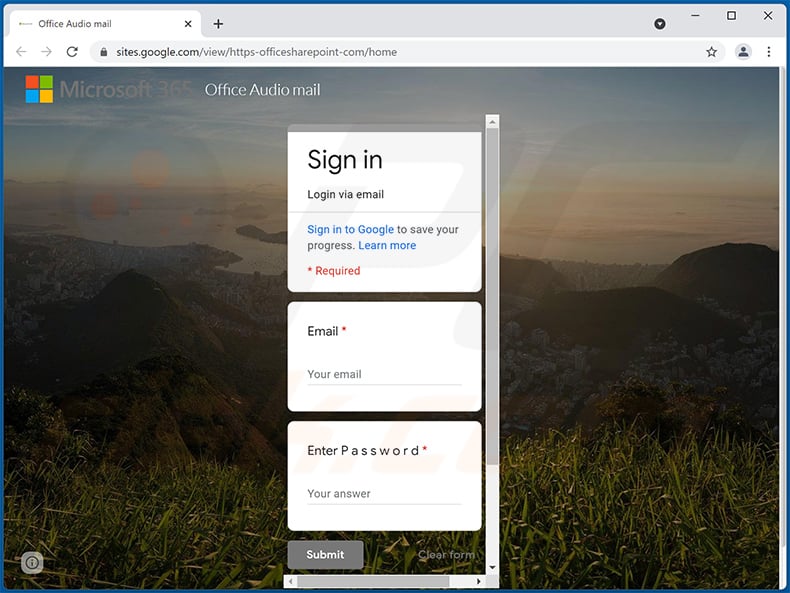
Sample 3:
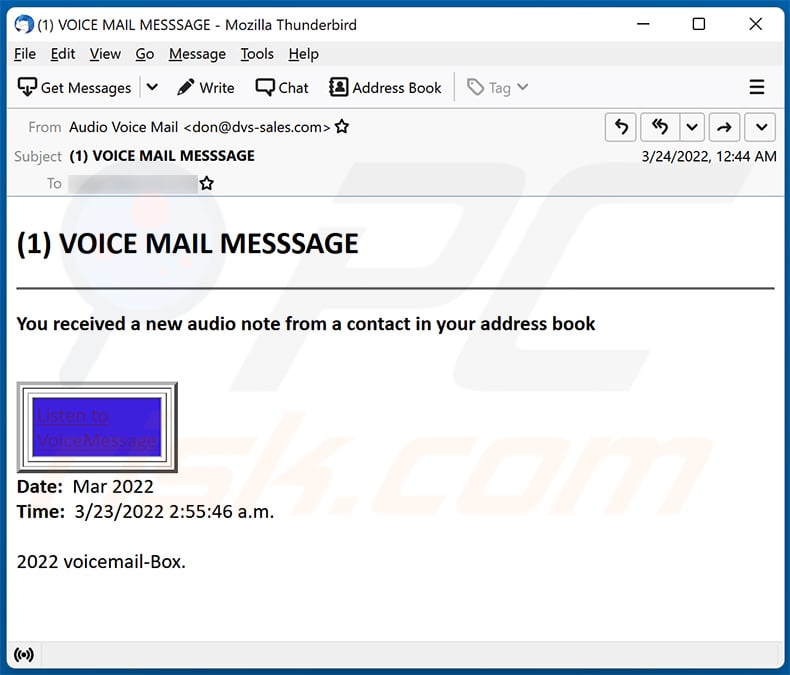
Text presented within:
Subject: (1) VOICE MAIL MESSSAGE
(1) VOICE MAIL MESSSAGEYou received a new audio note from a contact in your address book
Listen to VoiceMessage
Date: Mar 2022
Time: 3/23/2022 2:55:46 a.m.2022 voicemail-Box.
Sample 4:
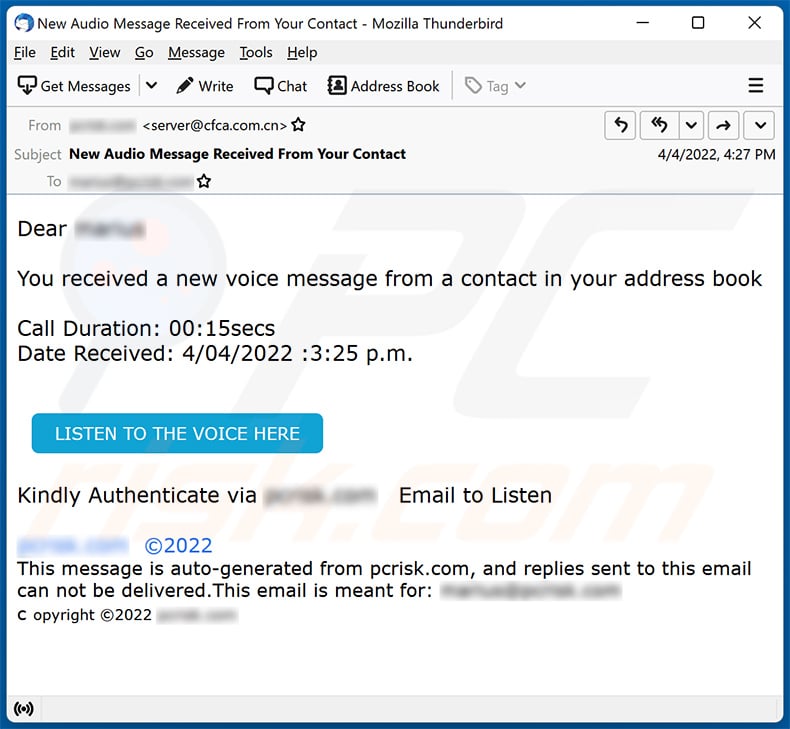
Text presented within:
Subject: New Audio Message Received From Your Contact
Dear ********You received a new voice message from a contact in your address book
Call Duration: 00:15secs
Date Received: 4/04/2022 :3:25 p.m.LISTEN TO THE VOICE HERE
Kindly Authenticate via ******** Email to Listen
******** ©2022
This message is auto-generated from ********, and replies sent to this email can not be delivered.This email is meant for: ********
c opyright ©2022 ********
Sample 5:
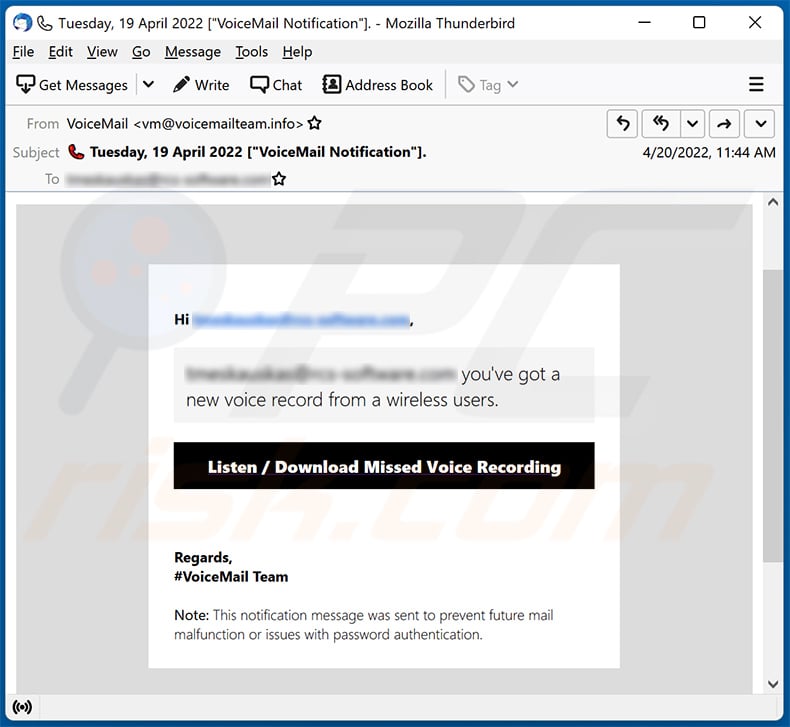
Text presented within:
Subject: Tuesday, 19 April 2022 ["VoiceMail Notification"].
Hi ********,
******** you've got a new voice record from a wireless users.
Listen / Download Missed Voice Recording
Regards,
#VoiceMail Team
Note: This notification message was sent to prevent future mail malfunction or issues with password authentication.Delete.
Sample 6:
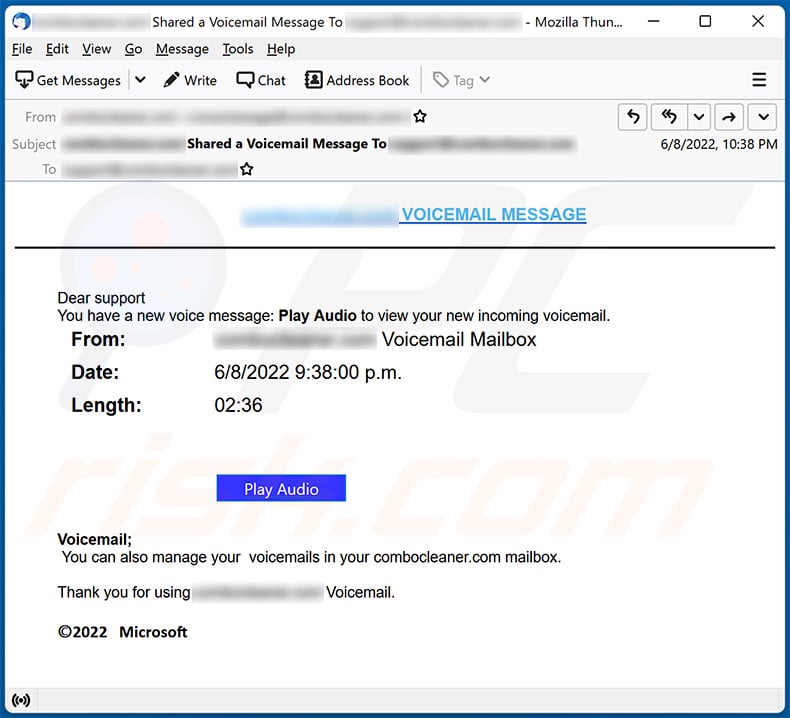
Text presented within:
Subject: - Shared a Voicemail Message To -
- VOICEMAIL MESSAGE
Dear support
You have a new voice message: Play Audio to view your new incoming voicemail.
From: - Voicemail Mailbox
Date: 6/8/2022 9:38:00 p.m.
Length: 02:36Play Audio
Voicemail;You can also manage your voicemails in your - mailbox.
Thank you for using - Voicemail.
Ⓒ2022 Microsoft
Sample 7:
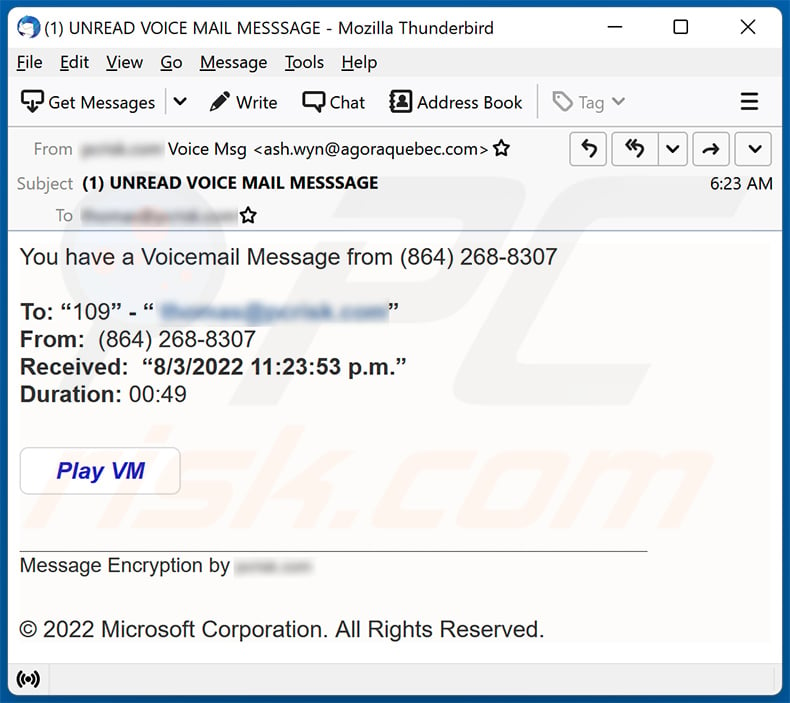
Text presented within:
Subject: (1) UNREAD VOICE MAIL MESSSAGE
You have a Voicemail Message from (864) 268-8307
To: “109” - “ -”
From: (864) 268-8307
Received: “8/3/2022 11:23:53 p.m.”
Duration: 00:49Play VM
____________________
Message Encryption by -© 2022 Microsoft Corporation. All Rights Reserved.
Screenshot of the promoted phishing site:
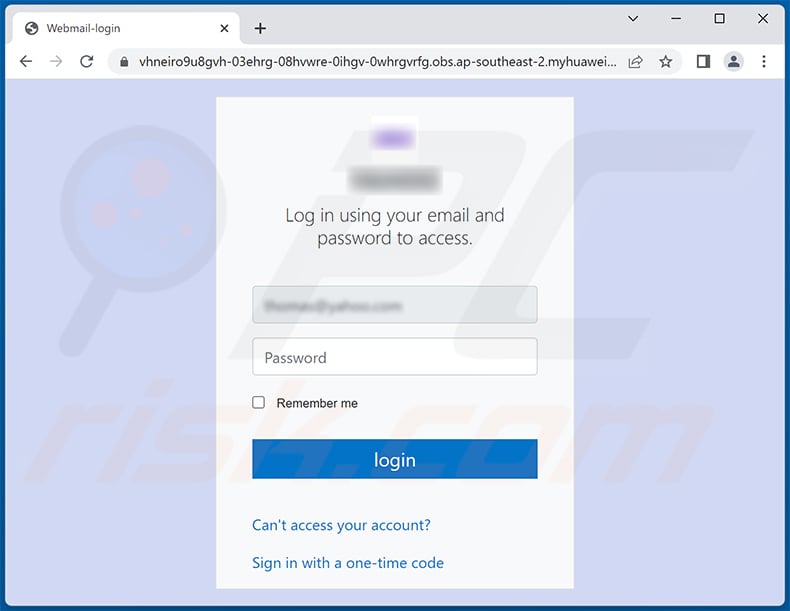
Sample 8:
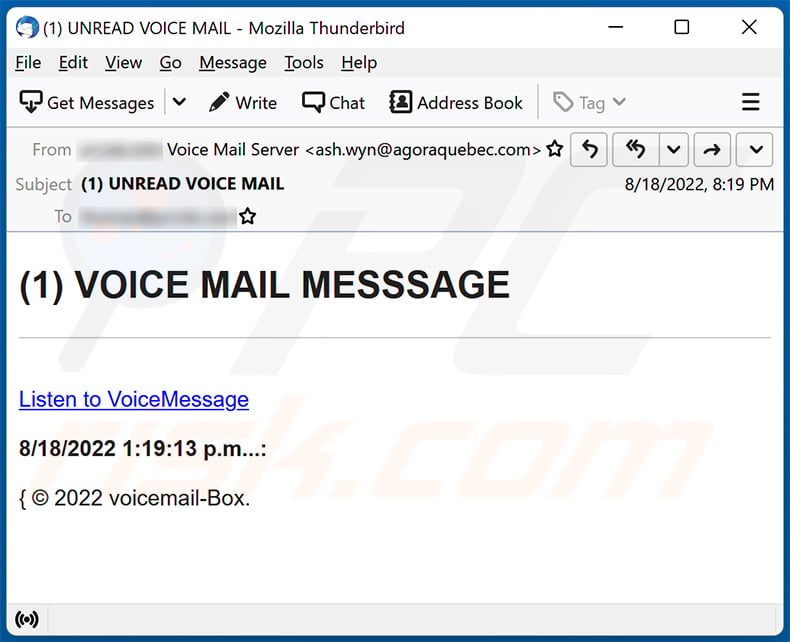
Text presented within:
Subject: (1) UNREAD VOICE MAIL
(1) VOICE MAIL MESSSAGEListen to VoiceMessage
8/18/2022 1:19:13 p.m...:
{ © 2022 voicemail-Box.
Sample 9:
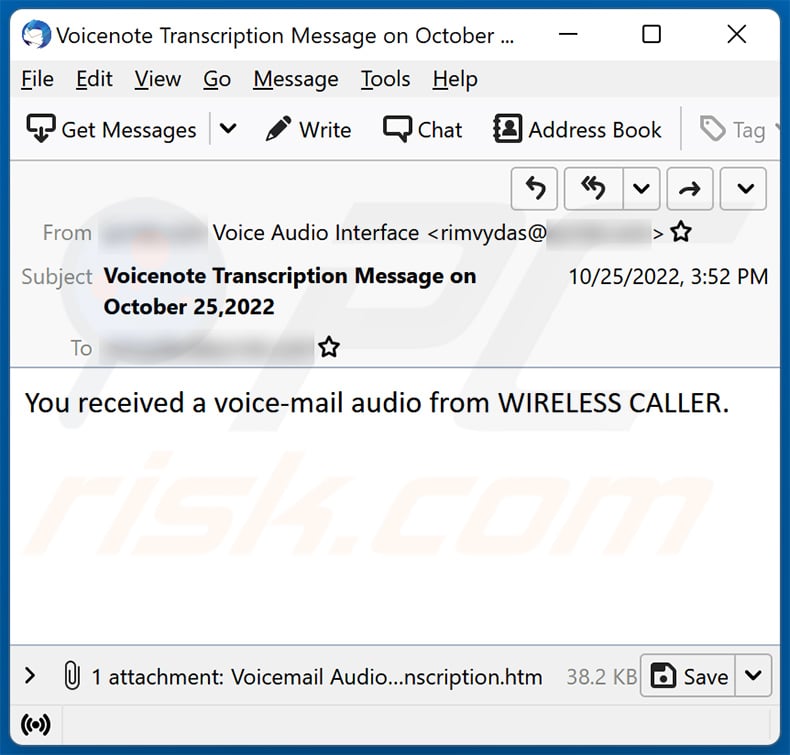
Text presented within:
Subject: Voicenote Transcription Message on October 25,2022
You received a voice-mail audio from WIRELESS CALLER.
Screenshot of the distributed HTML document (Voicemail Audio Transcription.htm):
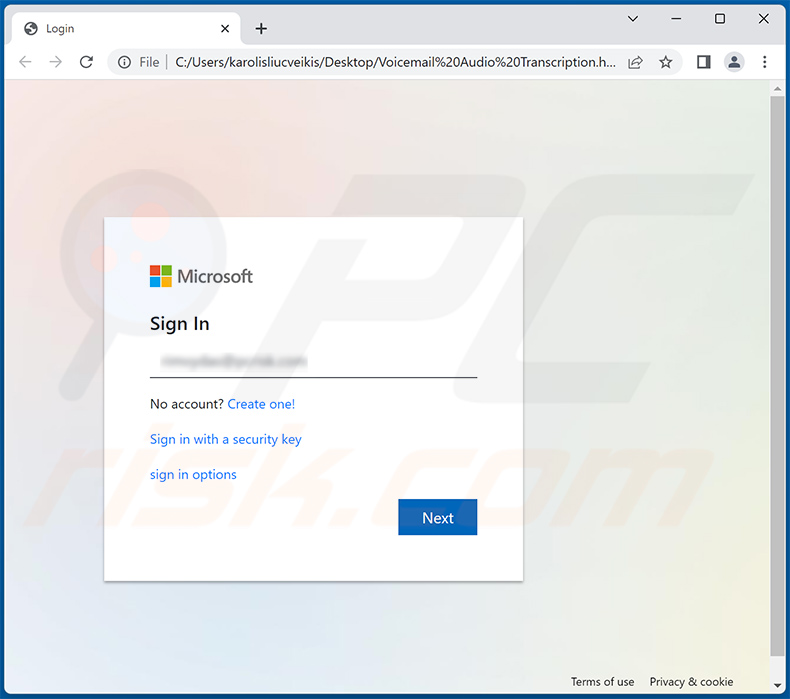
Sample 10:
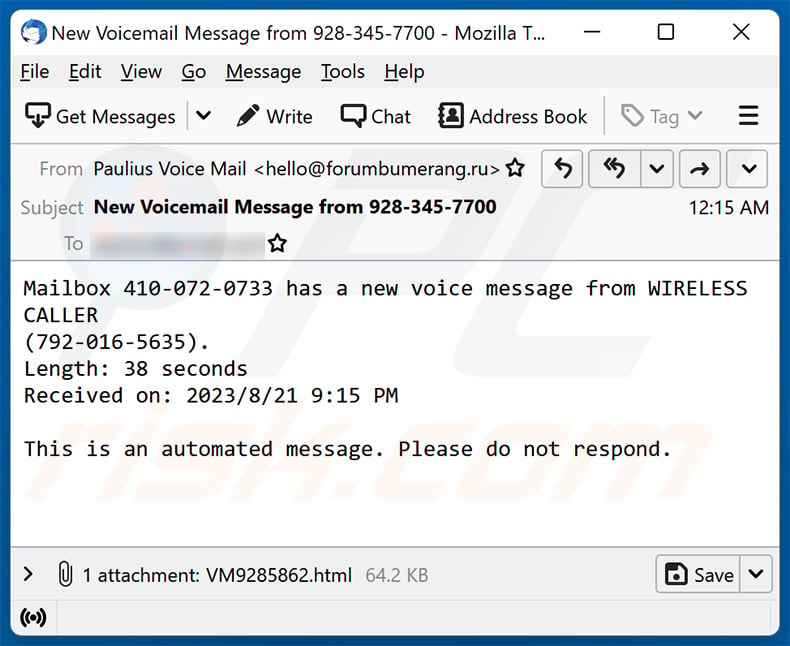
Text presented within:
Subject: New Voicemail Message from 928-345-7700
Mailbox 410-072-0733 has a new voice message from WIRELESS CALLER
(792-016-5635).
Length: 38 seconds
Received on: 2023/8/21 9:15 PMThis is an automated message. Please do not respond.
Screenshot of the attached HTML file:
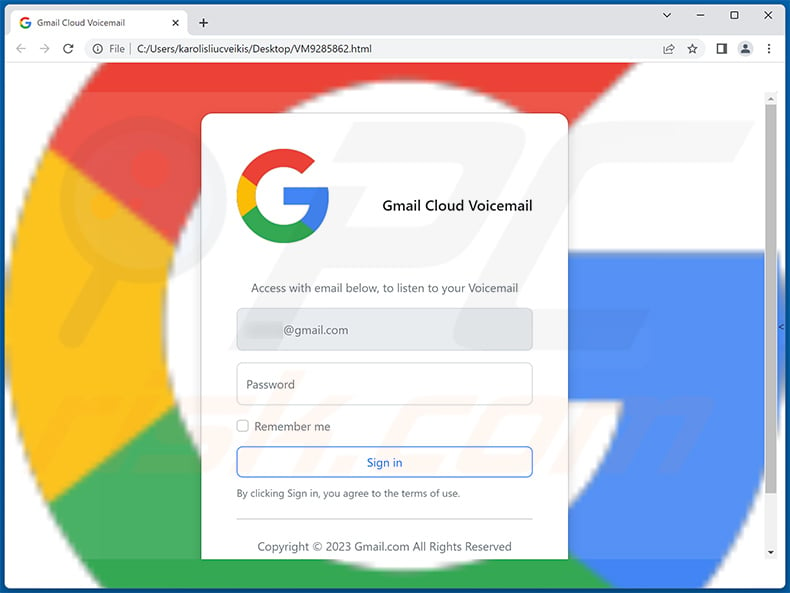
Sample 11:
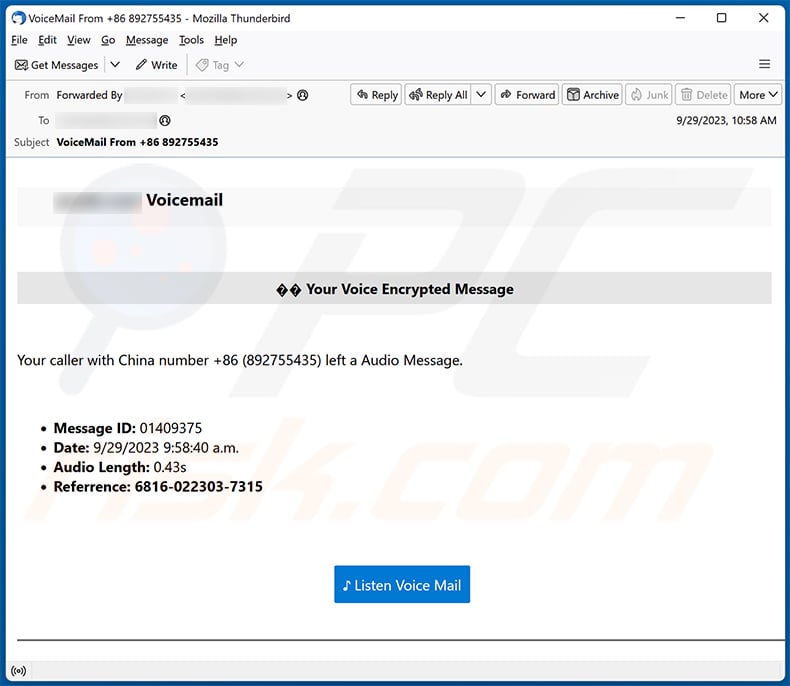
Text presented within:
Subject: VoiceMail From +86 892755435
- Voicemail
Your Voice Encrypted MessageYour caller with China number +86 (892755435) left a Audio Message.
Message ID: 01409375
Date: 9/29/2023 9:58:40 a.m.
Audio Length: 0.43s
Referrence: 6816-022303-7315Listen Voice Mail
Instant automatic malware removal:
Manual threat removal might be a lengthy and complicated process that requires advanced IT skills. Combo Cleaner is a professional automatic malware removal tool that is recommended to get rid of malware. Download it by clicking the button below:
DOWNLOAD Combo CleanerBy downloading any software listed on this website you agree to our Privacy Policy and Terms of Use. To use full-featured product, you have to purchase a license for Combo Cleaner. 7 days free trial available. Combo Cleaner is owned and operated by RCS LT, the parent company of PCRisk.com.
Quick menu:
- What is Voicemail spam?
- Types of malicious emails.
- How to spot a malicious email?
- What to do if you fell for an email scam?
Types of malicious emails:
![]() Phishing Emails
Phishing Emails
Most commonly, cybercriminals use deceptive emails to trick Internet users into giving away their sensitive private information, for example, login information for various online services, email accounts, or online banking information.
Such attacks are called phishing. In a phishing attack, cybercriminals usually send an email message with some popular service logo (for example, Microsoft, DHL, Amazon, Netflix), create urgency (wrong shipping address, expired password, etc.), and place a link which they hope their potential victims will click on.
After clicking the link presented in such email message, victims are redirected to a fake website that looks identical or extremely similar to the original one. Victims are then asked to enter their password, credit card details, or some other information that gets stolen by cybercriminals.
![]() Emails with Malicious Attachments
Emails with Malicious Attachments
Another popular attack vector is email spam with malicious attachments that infect users' computers with malware. Malicious attachments usually carry trojans that are capable of stealing passwords, banking information, and other sensitive information.
In such attacks, cybercriminals' main goal is to trick their potential victims into opening an infected email attachment. To achieve this goal, email messages usually talk about recently received invoices, faxes, or voice messages.
If a potential victim falls for the lure and opens the attachment, their computers get infected, and cybercriminals can collect a lot of sensitive information.
While it's a more complicated method to steal personal information (spam filters and antivirus programs usually detect such attempts), if successful, cybercriminals can get a much wider array of data and can collect information for a long period of time.
![]() Sextortion Emails
Sextortion Emails
This is a type of phishing. In this case, users receive an email claiming that a cybercriminal could access the webcam of the potential victim and has a video recording of one's masturbation.
To get rid of the video, victims are asked to pay a ransom (usually using Bitcoin or another cryptocurrency). Nevertheless, all of these claims are false - users who receive such emails should ignore and delete them.
How to spot a malicious email?
While cyber criminals try to make their lure emails look trustworthy, here are some things that you should look for when trying to spot a phishing email:
- Check the sender's ("from") email address: Hover your mouse over the "from" address and check if it's legitimate. For example, if you received an email from Microsoft, be sure to check if the email address is @microsoft.com and not something suspicious like @m1crosoft.com, @microsfot.com, @account-security-noreply.com, etc.
- Check for generic greetings: If the greeting in the email is "Dear user", "Dear @youremail.com", "Dear valued customer", this should raise suspiciousness. Most commonly, companies call you by your name. Lack of this information could signal a phishing attempt.
- Check the links in the email: Hover your mouse over the link presented in the email, if the link that appears seems suspicious, don't click it. For example, if you received an email from Microsoft and the link in the email shows that it will go to firebasestorage.googleapis.com/v0... you shouldn't trust it. It's best not to click any links in the emails but to visit the company website that sent you the email in the first place.
- Don't blindly trust email attachments: Most commonly, legitimate companies will ask you to log in to their website and to view any documents there; if you received an email with an attachment, it's a good idea to scan it with an antivirus application. Infected email attachments are a common attack vector used by cybercriminals.
To minimise the risk of opening phishing and malicious emails we recommend using Combo Cleaner Antivirus for Windows.
Example of a spam email:

What to do if you fell for an email scam?
- If you clicked on a link in a phishing email and entered your password - be sure to change your password as soon as possible. Usually, cybercriminals collect stolen credentials and then sell them to other groups that use them for malicious purposes. If you change your password in a timely manner, there's a chance that criminals won't have enough time to do any damage.
- If you entered your credit card information - contact your bank as soon as possible and explain the situation. There's a good chance that you will need to cancel your compromised credit card and get a new one.
- If you see any signs of identity theft - you should immediately contact the Federal Trade Commission. This institution will collect information about your situation and create a personal recovery plan.
- If you opened a malicious attachment - your computer is probably infected, you should scan it with a reputable antivirus application. For this purpose, we recommend using Combo Cleaner Antivirus for Windows.
- Help other Internet users - report phishing emails to Anti-Phishing Working Group, FBI’s Internet Crime Complaint Center, National Fraud Information Center and U.S. Department of Justice.
Frequently Asked Questions (FAQ)
Why did I receive this email?
Cyber criminals distribute spam emails in large-scale operations; hence, thousands of users receive identical messages.
I have provided my personal information when tricked by this spam email, what should I do?
If you have provided account credentials - immediately change the passwords of all potentially exposed accounts and inform their official support. And if you have disclosed other private data (e.g., ID card details, credit card numbers, etc.) - contact the relevant authorities without delay.
I have read a spam email but didn't open the attachment, is my computer infected?
No, just reading a spam email will not initiate any malware download/installation processes. Systems are infected when the attachments or links found in these emails are opened/clicked.
I have downloaded and opened a file attached to a spam email, is my computer infected?
If the opened file was an executable (.exe, .run, etc.) - most likely, yes - your system was infected. However, if it was a document (.doc, .pdf, .xls, etc.) - you might have avoided triggering the infection processes. These formats may require additional user interaction (e.g., enabling macro commands) to start downloading/installing malware.
Will Combo Cleaner remove malware infections present in email attachments?
Yes, Combo Cleaner is designed to detect and eliminate threats. It is capable of removing almost all known malware infections. It has to be stressed that performing a complete system scan is crucial - since high-end malicious programs usually hide deep within systems.
Share:

Tomas Meskauskas
Expert security researcher, professional malware analyst
I am passionate about computer security and technology. I have an experience of over 10 years working in various companies related to computer technical issue solving and Internet security. I have been working as an author and editor for pcrisk.com since 2010. Follow me on Twitter and LinkedIn to stay informed about the latest online security threats.
PCrisk security portal is brought by a company RCS LT.
Joined forces of security researchers help educate computer users about the latest online security threats. More information about the company RCS LT.
Our malware removal guides are free. However, if you want to support us you can send us a donation.
DonatePCrisk security portal is brought by a company RCS LT.
Joined forces of security researchers help educate computer users about the latest online security threats. More information about the company RCS LT.
Our malware removal guides are free. However, if you want to support us you can send us a donation.
Donate
▼ Show Discussion